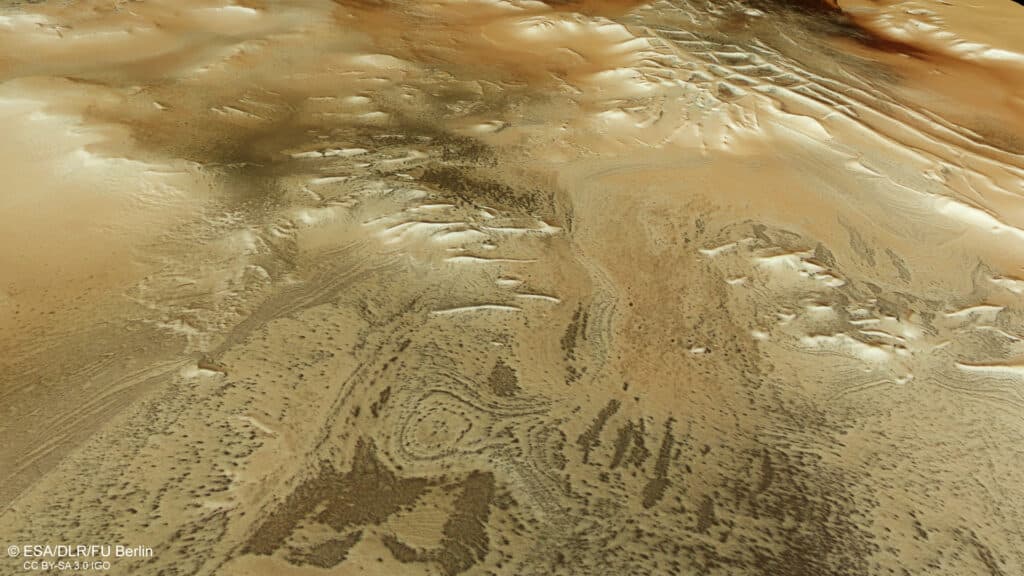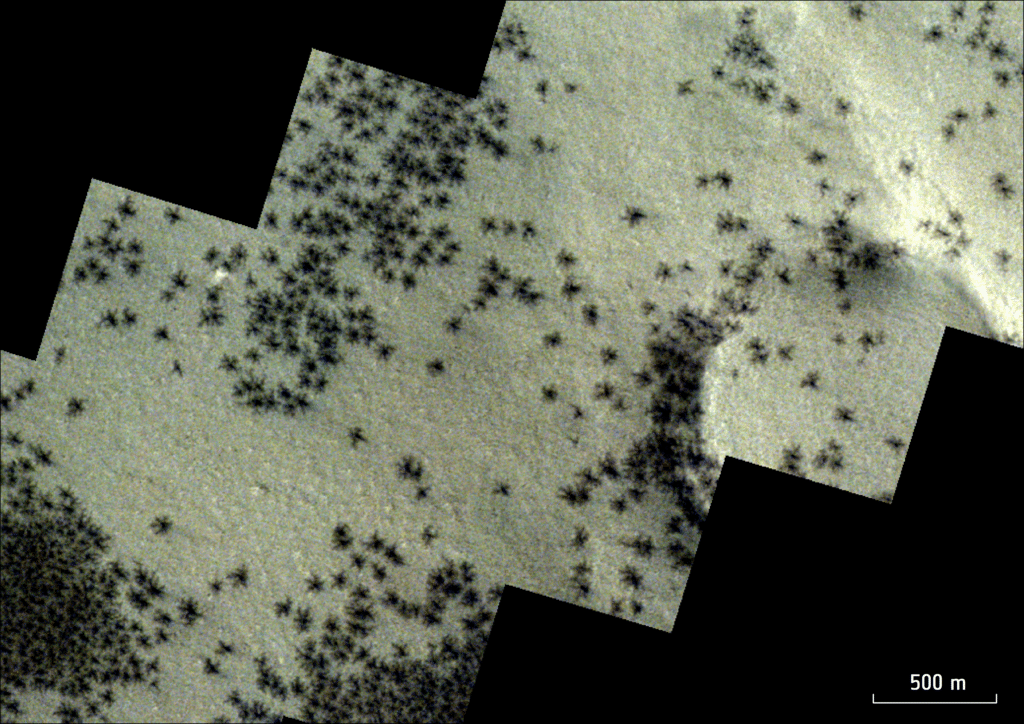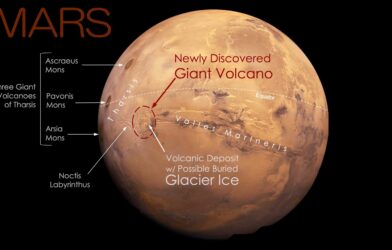If you’re petrified of anything resembling a spider, might be best not to take the next shuttle to the Red Planet. The European Space Agency’s Mars Express orbiter has captured images of peculiar dark spots — which resemble the creepy crawlers — scattered across the southern polar region of Mars.
These features are not actual arachnids, of course, but rather the result of a unique natural phenomenon that occurs during the Martian springtime, according to the ESA.
The dark spots, ranging from 45 meters to 1 kilometer in size, form when sunlight falls on layers of carbon dioxide ice that have accumulated over the dark winter months. As the Sun’s rays penetrate the ice, the carbon dioxide at the bottom of the layer transforms from a solid directly into a gas through a process called sublimation. This gas builds up pressure until it eventually breaks through the overlying slabs of ice, which can be up to a meter thick.

As the gas bursts free, it carries dark dust along with it, creating tall fountains or geysers that shoot up through cracks in the ice. When the material falls back to the surface, it settles and forms the distinctive dark spots visible in the images captured by Mars Express. This process also creates intricate “spider-shaped” patterns etched beneath the ice, which serve as a telltale sign of the presence of these unique features.
Another ESA Mars explorer, the ExoMars Trace Gas Orbiter (TGO), has provided even clearer images of the spidery, web-like channels carved into the ice. While the Mars Express images show the dark spots on the surface, the TGO perspective reveals the intricate patterns hidden beneath.
The dark spots can be seen throughout the Mars Express image, particularly in the dark region to the left, which is located just outside an area nicknamed “Inca City.” This name stems from the linear, almost geometric network of ridges that resemble ancient Inca ruins. Officially known as Angustus Labyrinthus, Inca City was first discovered in 1972 by NASA’s Mariner 9 probe.
Scientists are still unsure about the exact formation process of Inca City. Some theories suggest that sand dunes have turned to stone over time, while others propose that materials like magma or sand may be seeping through fractured sheets of Martian rock. Another possibility is that the ridges are ‘eskers,’ winding structures associated with glaciers.
The “walls” of Inca City appear to trace part of a large circle, 86 kilometers in diameter, leading scientists to believe that the “city” is situated within a large crater formed by an impact from a space rock. This impact likely caused faults to ripple through the surrounding plain, which were subsequently filled with rising lava and have since eroded over time.

Towards the middle section of the image seen above, the landscape transforms, featuring large roundish and oval swirls that create a marble-like effect. This is thought to occur when layered deposits are worn away over time. In the right-center of the frame, steep-flanked, flat-topped mounds and hills rise more than 1,500 meters above the surrounding terrain. These formations develop as softer material is eroded by flows of wind, water, or ice, leaving behind the harder material that constitutes the hills.
As Mars Express continues its mission, having already revealed a wealth of information about the Red Planet over the past two decades, scientists eagerly anticipate further discoveries that will enhance our understanding of this intriguing world. With each new image and dataset, we come closer to unraveling the mysteries of Mars and its captivating geological features, such as the enigmatic spiders that emerge during the Martian spring.












If this was for real, it would make world-wide news today.
Those aren’t spiders. They are Xenomorphs. Is NASA going to make poor Ripley go through this all again? The poor woman has been through enough. God, we never learn.